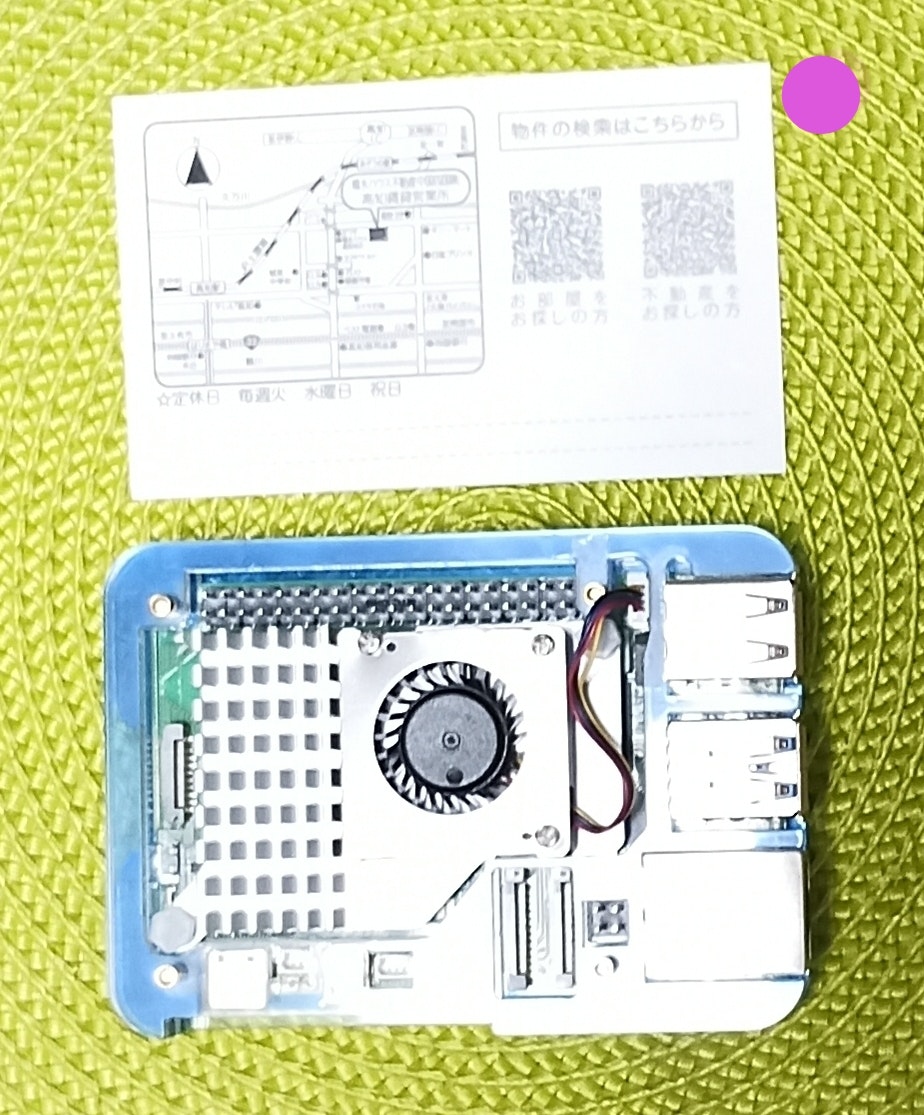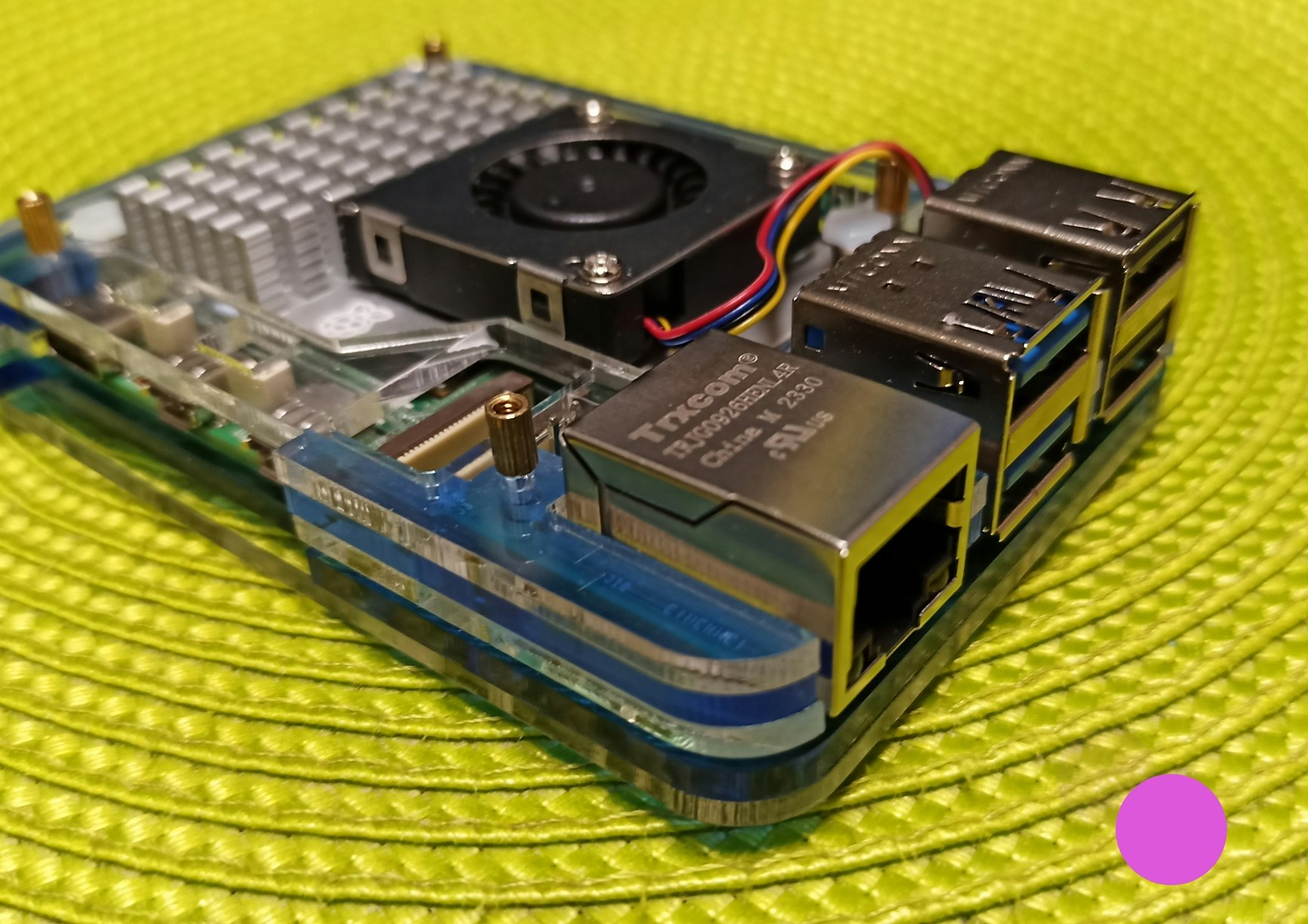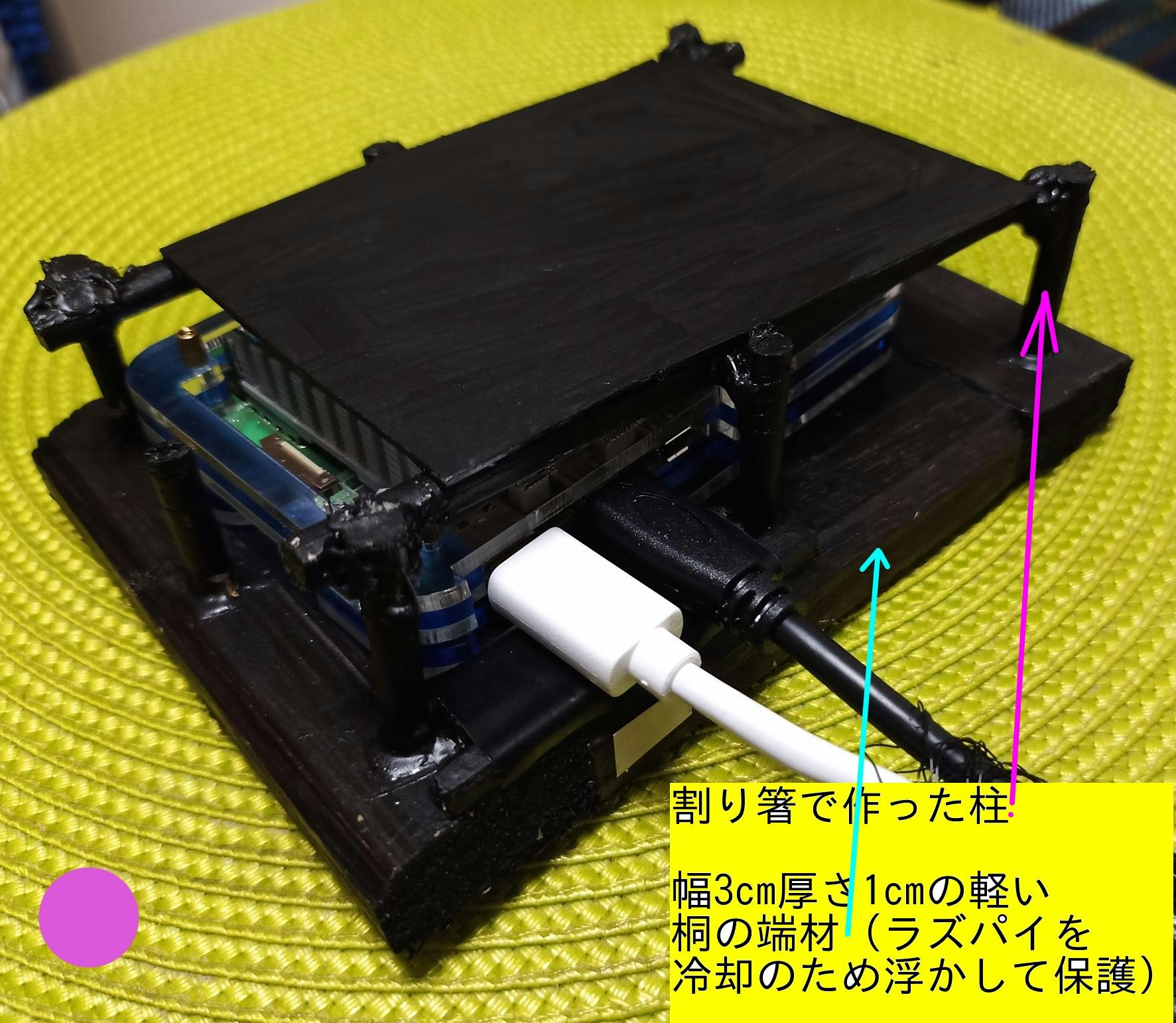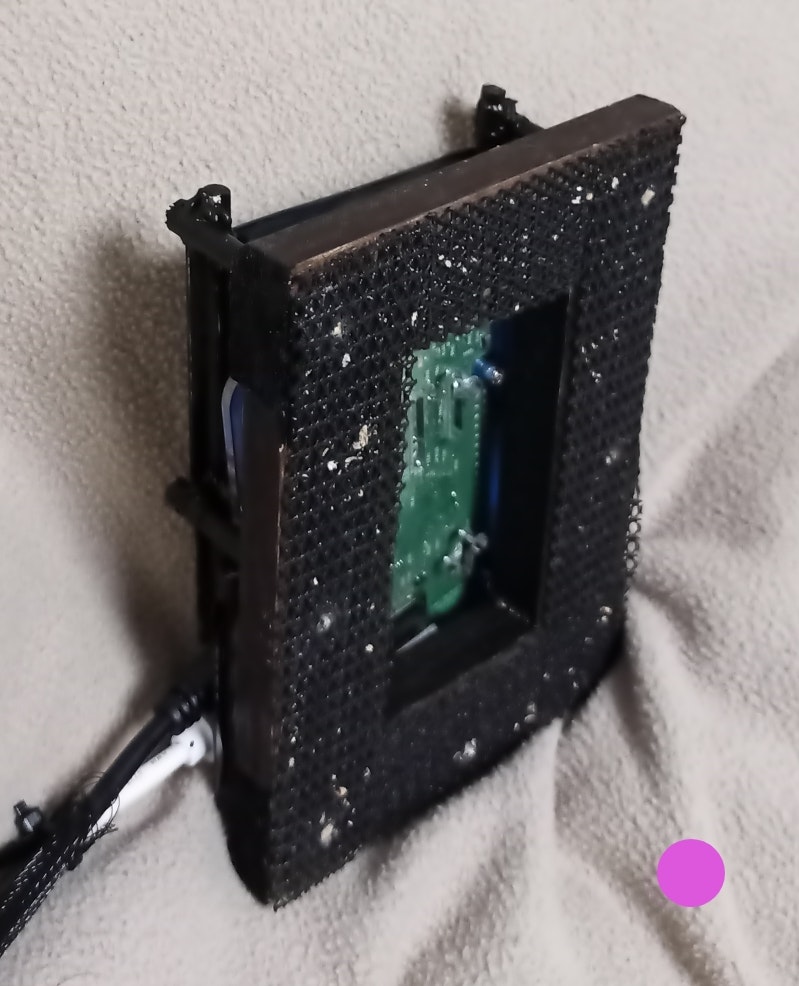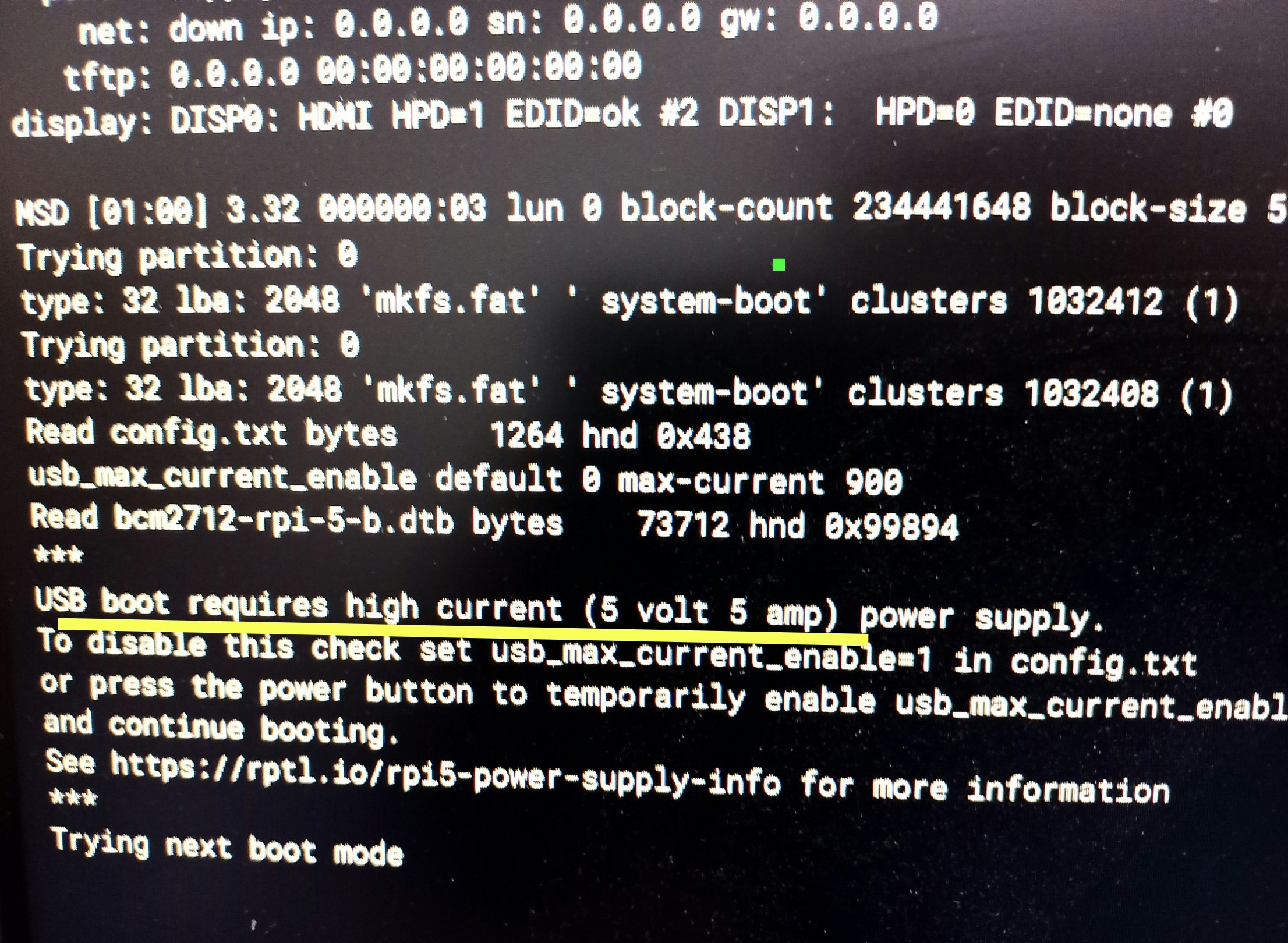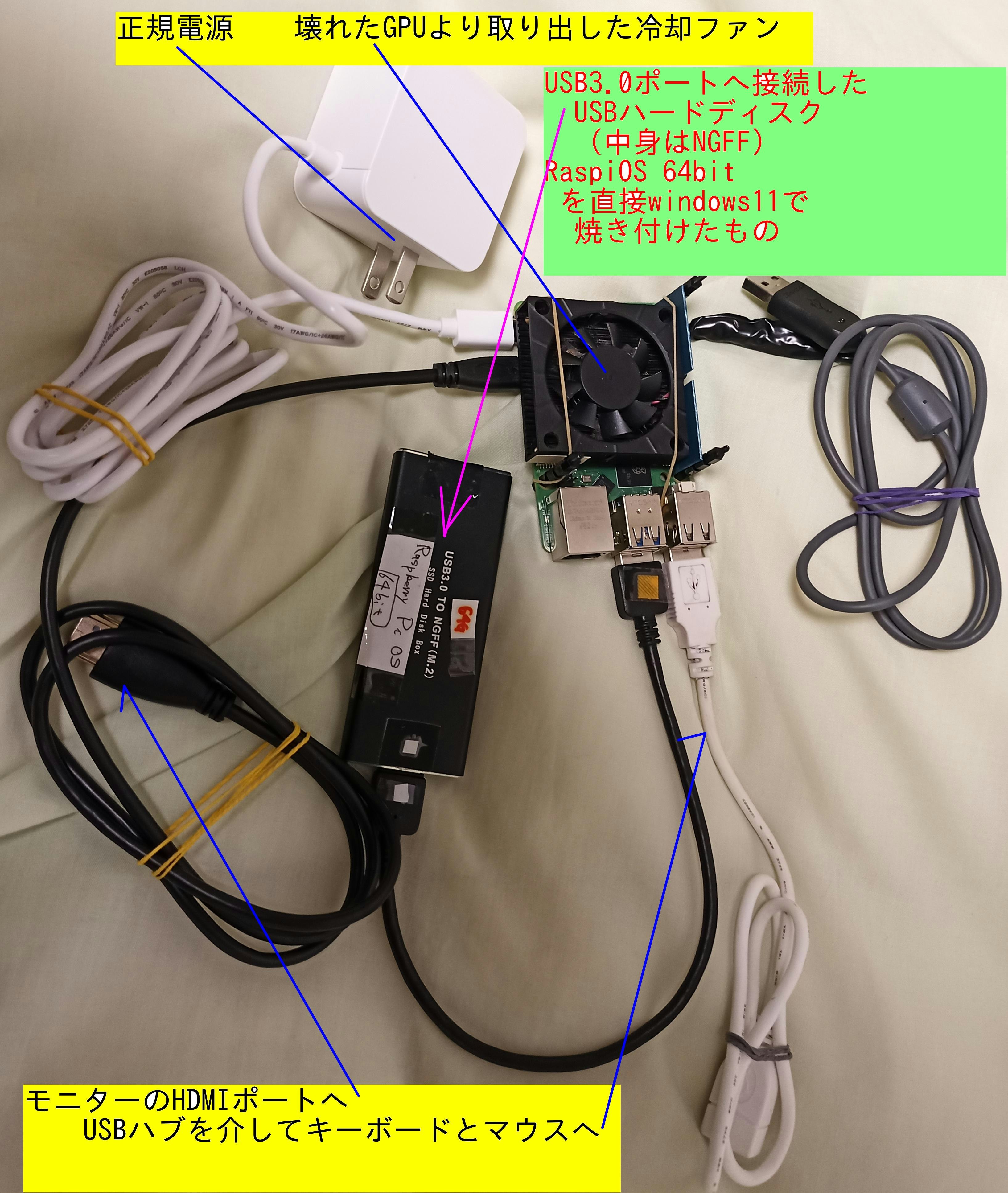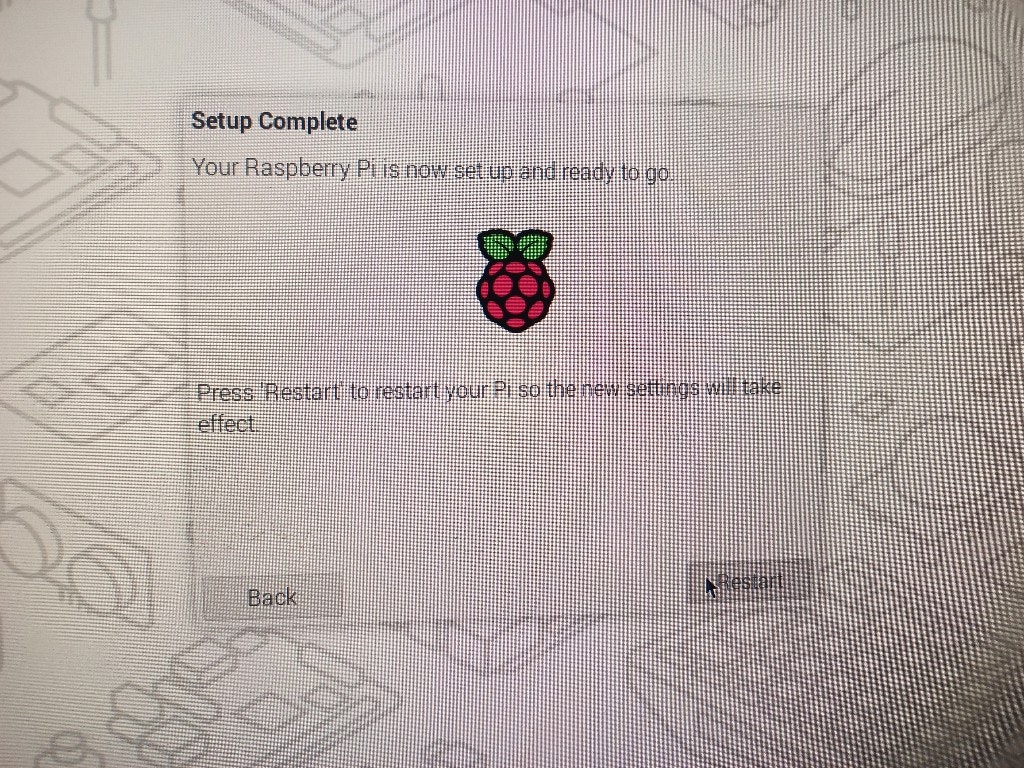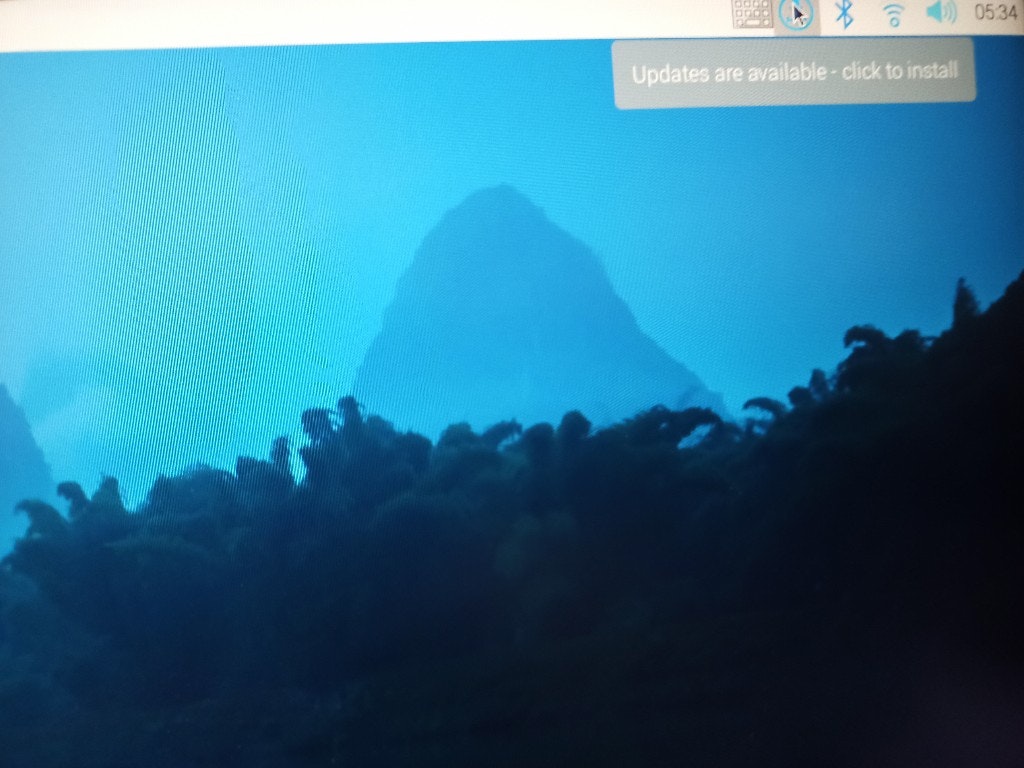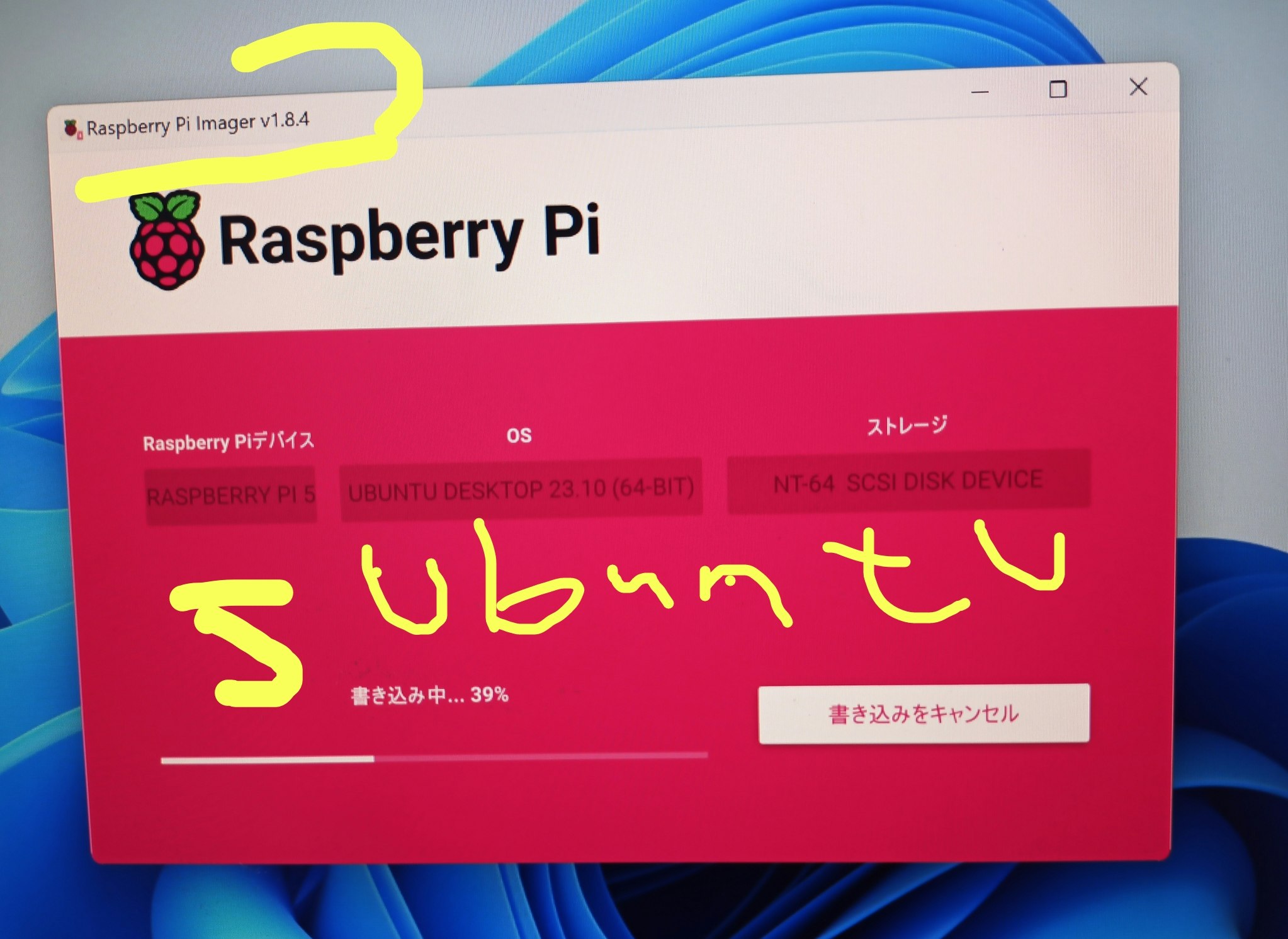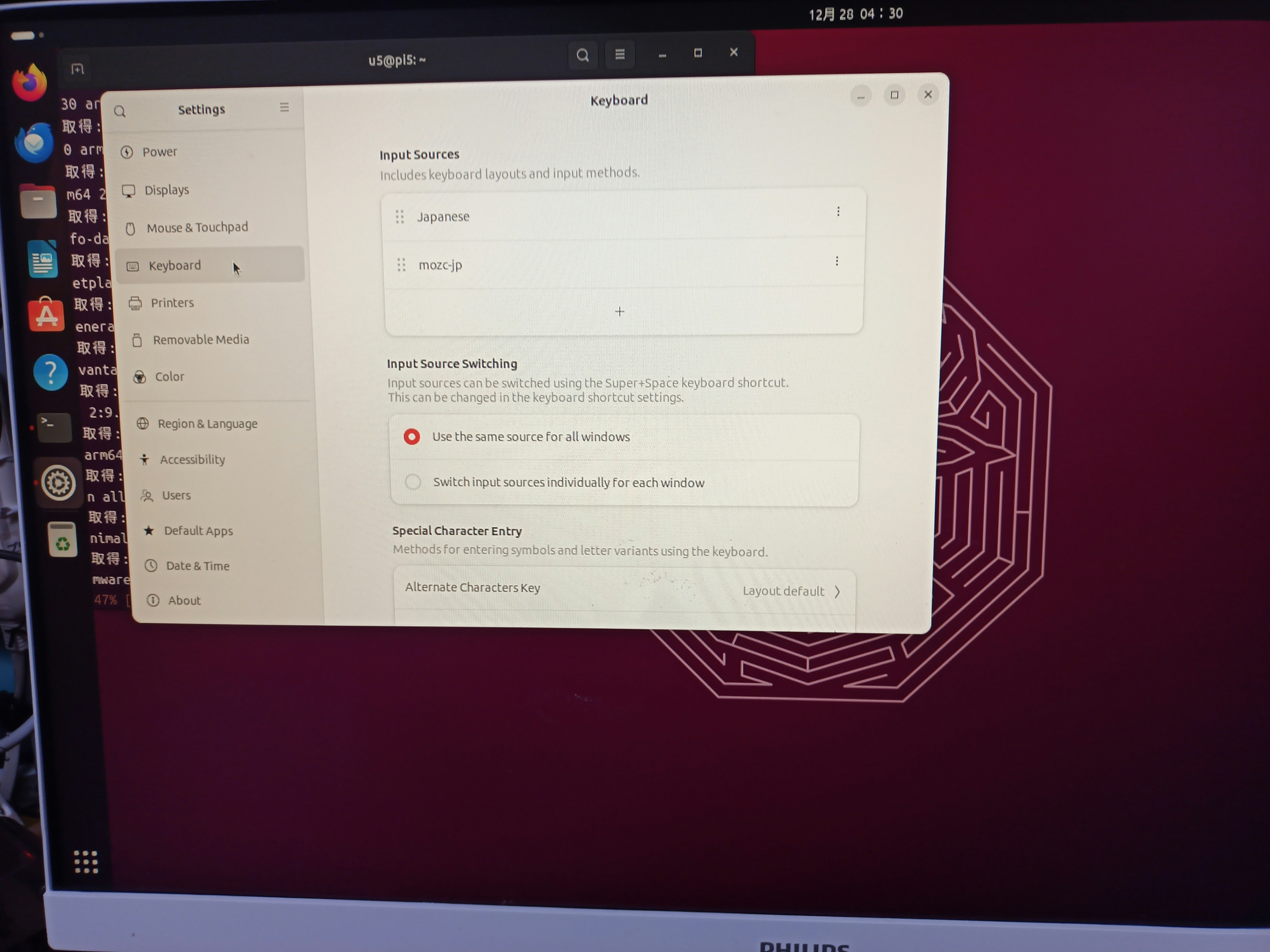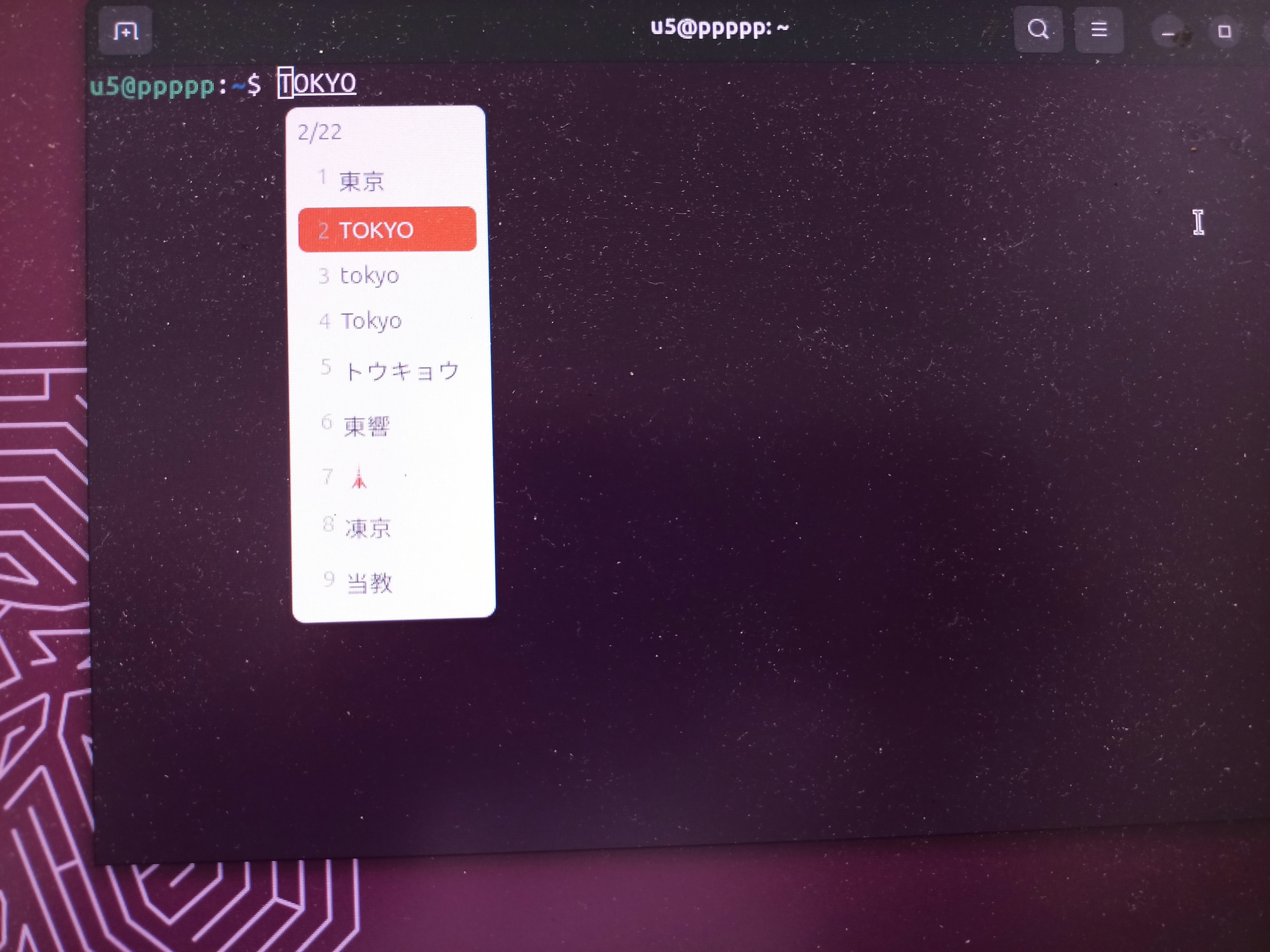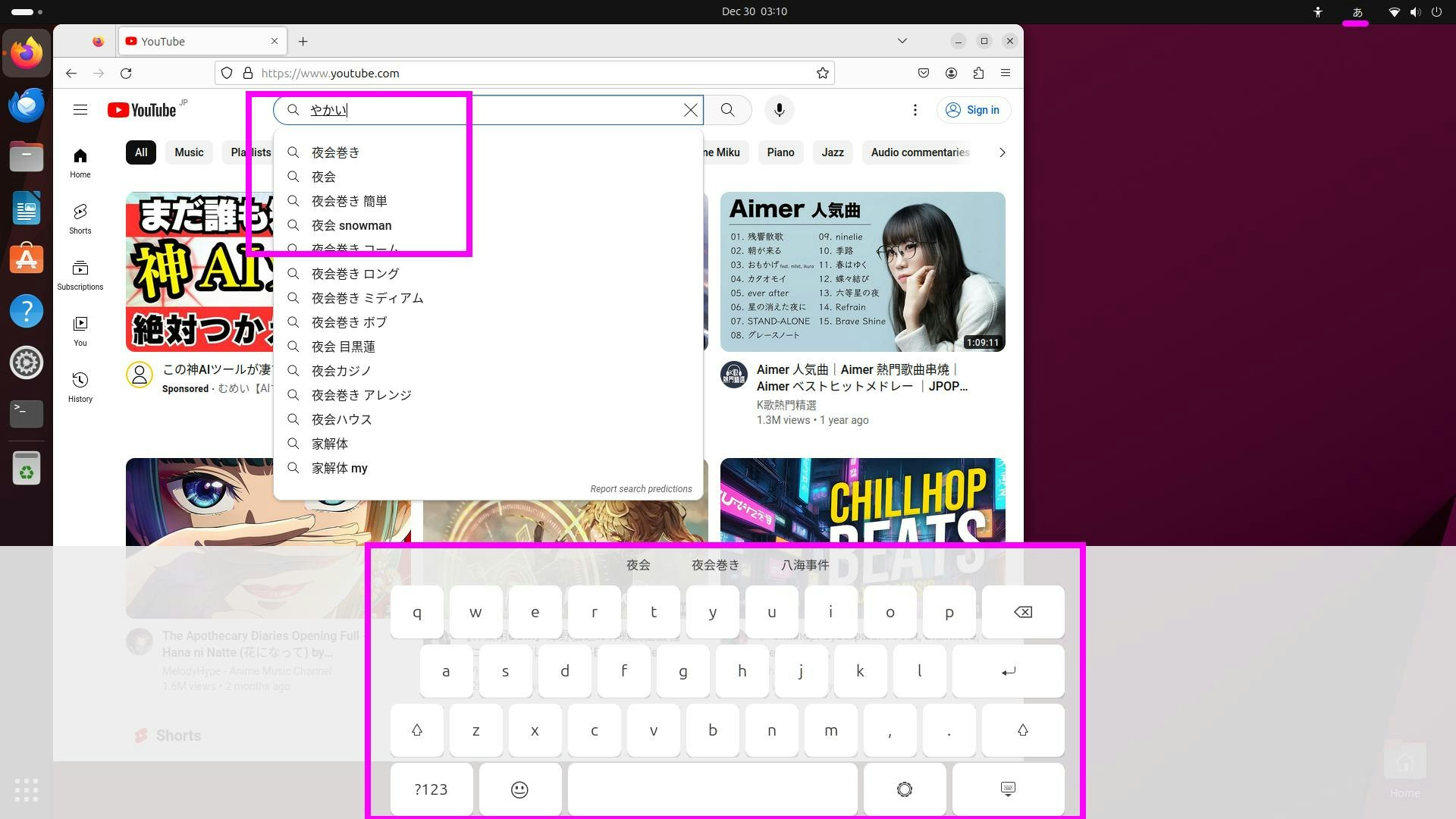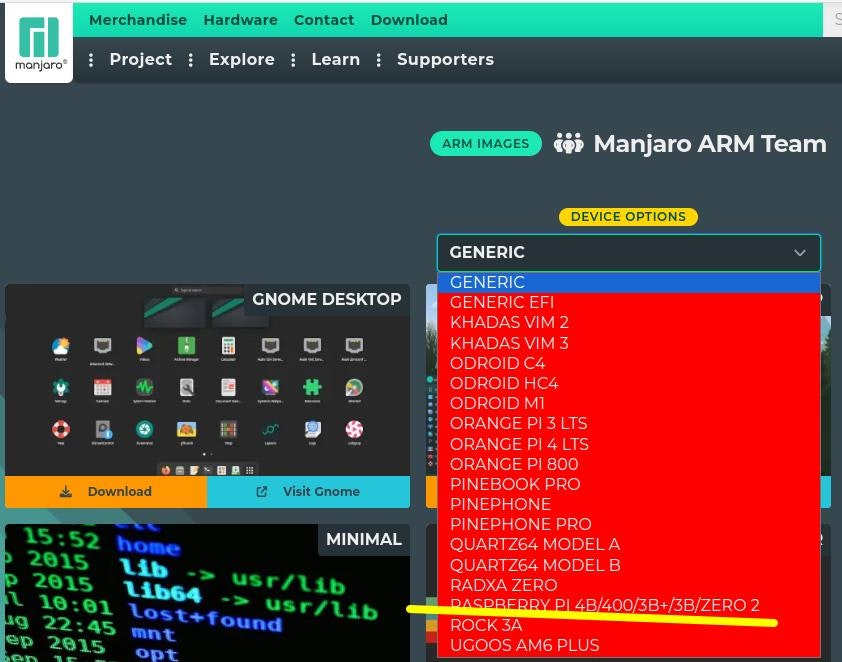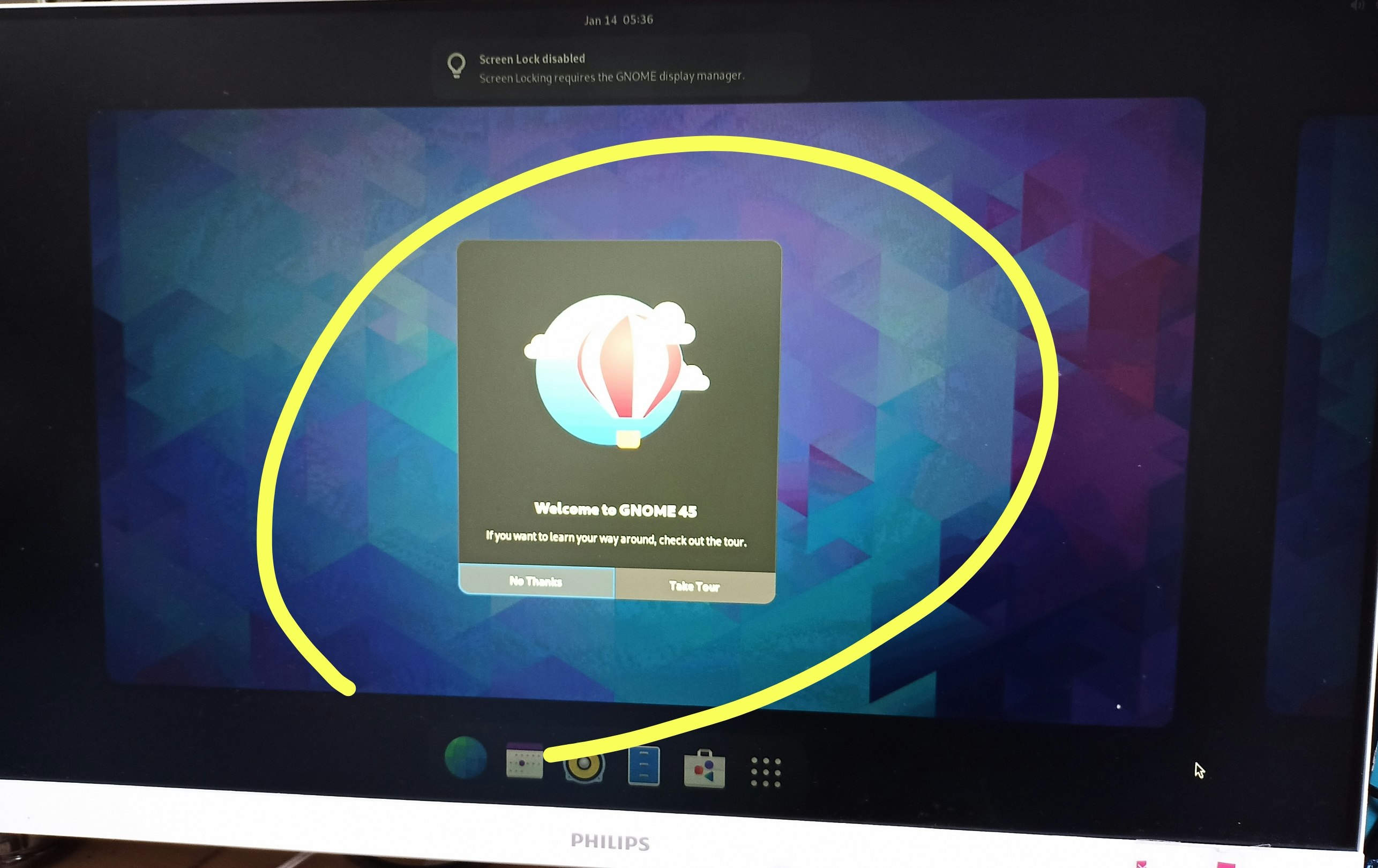ケースがやっと手に入り 今は
実際の運用は 転落しても壊れないように
電源にご注意
5V 3A電源で ubuntu を立ち上げようとすると
で先に進めないので 5A電源をもっとくのが無難です(他のlinuxで修正する方法はありますけどねー)
chrome がこの速さです
ファンやラズパイケース到着前は
を
https://www.raspberrypi.com/software/
の
Raspberry Pi Imager
で
SDカードではなく このUSBハードディスクに 直接焼付ました
なんと
これだけでUSBハードディスクから 立ち上がります
もう
https://www.pc-koubou.jp/magazine/52103
に かかれてるような
SD Card Copier」を 使わなくていいです
update は
自分のいつものLINUXとくらべても 十二分に早い
X-1)日本語入力
# aptitude search fcitx-mozc
i fcitx-mozc - Mozc engine for fcitx - Client of the Moz
p fcitx-mozc:armhf - Mozc engine for fcitx - Client of the Moz
i A fcitx-mozc-data - Mozc input method - data files for fcitx
v fcitx-mozc-data:armhf -
X-2)更新されるパッケージがありません
aptitude upgrade
インストール・削除・更新されるパッケージがありません。
X-3) fdisk -l
Disk /dev/ram0: 4 MiB, 4194304 bytes, 8192 sectors
Units: sectors of 1 * 512 = 512 bytes
Sector size (logical/physical): 512 bytes / 16384 bytes
I/O size (minimum/optimal): 16384 bytes / 16384 bytes
Disk /dev/ram1: 4 MiB, 4194304 bytes, 8192 sectors
Units: sectors of 1 * 512 = 512 bytes
Sector size (logical/physical): 512 bytes / 16384 bytes
I/O size (minimum/optimal): 16384 bytes / 16384 bytes
Disk /dev/ram2: 4 MiB, 4194304 bytes, 8192 sectors
Units: sectors of 1 * 512 = 512 bytes
Sector size (logical/physical): 512 bytes / 16384 bytes
I/O size (minimum/optimal): 16384 bytes / 16384 bytes
Disk /dev/ram3: 4 MiB, 4194304 bytes, 8192 sectors
Units: sectors of 1 * 512 = 512 bytes
Sector size (logical/physical): 512 bytes / 16384 bytes
I/O size (minimum/optimal): 16384 bytes / 16384 bytes
Disk /dev/ram4: 4 MiB, 4194304 bytes, 8192 sectors
Units: sectors of 1 * 512 = 512 bytes
Sector size (logical/physical): 512 bytes / 16384 bytes
I/O size (minimum/optimal): 16384 bytes / 16384 bytes
Disk /dev/ram5: 4 MiB, 4194304 bytes, 8192 sectors
Units: sectors of 1 * 512 = 512 bytes
Sector size (logical/physical): 512 bytes / 16384 bytes
I/O size (minimum/optimal): 16384 bytes / 16384 bytes
Disk /dev/ram6: 4 MiB, 4194304 bytes, 8192 sectors
Units: sectors of 1 * 512 = 512 bytes
Sector size (logical/physical): 512 bytes / 16384 bytes
I/O size (minimum/optimal): 16384 bytes / 16384 bytes
Disk /dev/ram7: 4 MiB, 4194304 bytes, 8192 sectors
Units: sectors of 1 * 512 = 512 bytes
Sector size (logical/physical): 512 bytes / 16384 bytes
I/O size (minimum/optimal): 16384 bytes / 16384 bytes
Disk /dev/ram8: 4 MiB, 4194304 bytes, 8192 sectors
Units: sectors of 1 * 512 = 512 bytes
Sector size (logical/physical): 512 bytes / 16384 bytes
I/O size (minimum/optimal): 16384 bytes / 16384 bytes
Disk /dev/ram9: 4 MiB, 4194304 bytes, 8192 sectors
Units: sectors of 1 * 512 = 512 bytes
Sector size (logical/physical): 512 bytes / 16384 bytes
I/O size (minimum/optimal): 16384 bytes / 16384 bytes
Disk /dev/ram10: 4 MiB, 4194304 bytes, 8192 sectors
Units: sectors of 1 * 512 = 512 bytes
Sector size (logical/physical): 512 bytes / 16384 bytes
I/O size (minimum/optimal): 16384 bytes / 16384 bytes
Disk /dev/ram11: 4 MiB, 4194304 bytes, 8192 sectors
Units: sectors of 1 * 512 = 512 bytes
Sector size (logical/physical): 512 bytes / 16384 bytes
I/O size (minimum/optimal): 16384 bytes / 16384 bytes
Disk /dev/ram12: 4 MiB, 4194304 bytes, 8192 sectors
Units: sectors of 1 * 512 = 512 bytes
Sector size (logical/physical): 512 bytes / 16384 bytes
I/O size (minimum/optimal): 16384 bytes / 16384 bytes
Disk /dev/ram13: 4 MiB, 4194304 bytes, 8192 sectors
Units: sectors of 1 * 512 = 512 bytes
Sector size (logical/physical): 512 bytes / 16384 bytes
I/O size (minimum/optimal): 16384 bytes / 16384 bytes
Disk /dev/ram14: 4 MiB, 4194304 bytes, 8192 sectors
Units: sectors of 1 * 512 = 512 bytes
Sector size (logical/physical): 512 bytes / 16384 bytes
I/O size (minimum/optimal): 16384 bytes / 16384 bytes
Disk /dev/ram15: 4 MiB, 4194304 bytes, 8192 sectors
Units: sectors of 1 * 512 = 512 bytes
Sector size (logical/physical): 512 bytes / 16384 bytes
I/O size (minimum/optimal): 16384 bytes / 16384 bytes
Disk /dev/sda: 119.24 GiB, 128035676160 bytes, 250069680 sectors
Disk model: Generic
Units: sectors of 1 * 512 = 512 bytes
Sector size (logical/physical): 512 bytes / 4096 bytes
I/O size (minimum/optimal): 4096 bytes / 4096 bytes
Disklabel type: dos
Disk identifier: 0x3b8d1a25
Device Boot Start End Sectors Size Id Type
/dev/sda1 8192 1056767 1048576 512M c W95 FAT32 (LBA)
/dev/sda2 1056768 125045423 123988656 59.1G 83 Linux
X-4)cat /etc/fstab
proc /proc proc defaults 0 0
PARTUUID=3b8d1a25-01 /boot/firmware vfat defaults 0 2
PARTUUID=3b8d1a25-02 / ext4 defaults,noatime 0 1
# a swapfile is not a swap partition, no line here
# use dphys-swapfile swap[on|off] for that
## X-3) blkid
#blkid /dev/sda1
/dev/sda1: LABEL_FATBOOT="bootfs" LABEL="bootfs" UUID="EF6E-C078" BLOCK_SIZE="512" TYPE="vfat" PARTUUID="3b8d1a25-01"
root@raspberrypi:/home/u5
blkid /dev/sda2
/dev/sda2: LABEL="rootfs" UUID="4aa56689-dcb4-4759-90e6-179beae559ac" BLOCK_SIZE="4096" TYPE="ext4" PARTUUID="3b8d1a25-02"
X-10) ubuntu
おなじく USBハードディスクに直接焼きます
とありますが、現在はうまくいきません
ibus-mozc いれないといけないかも?
予想どうりでした
インスト時は
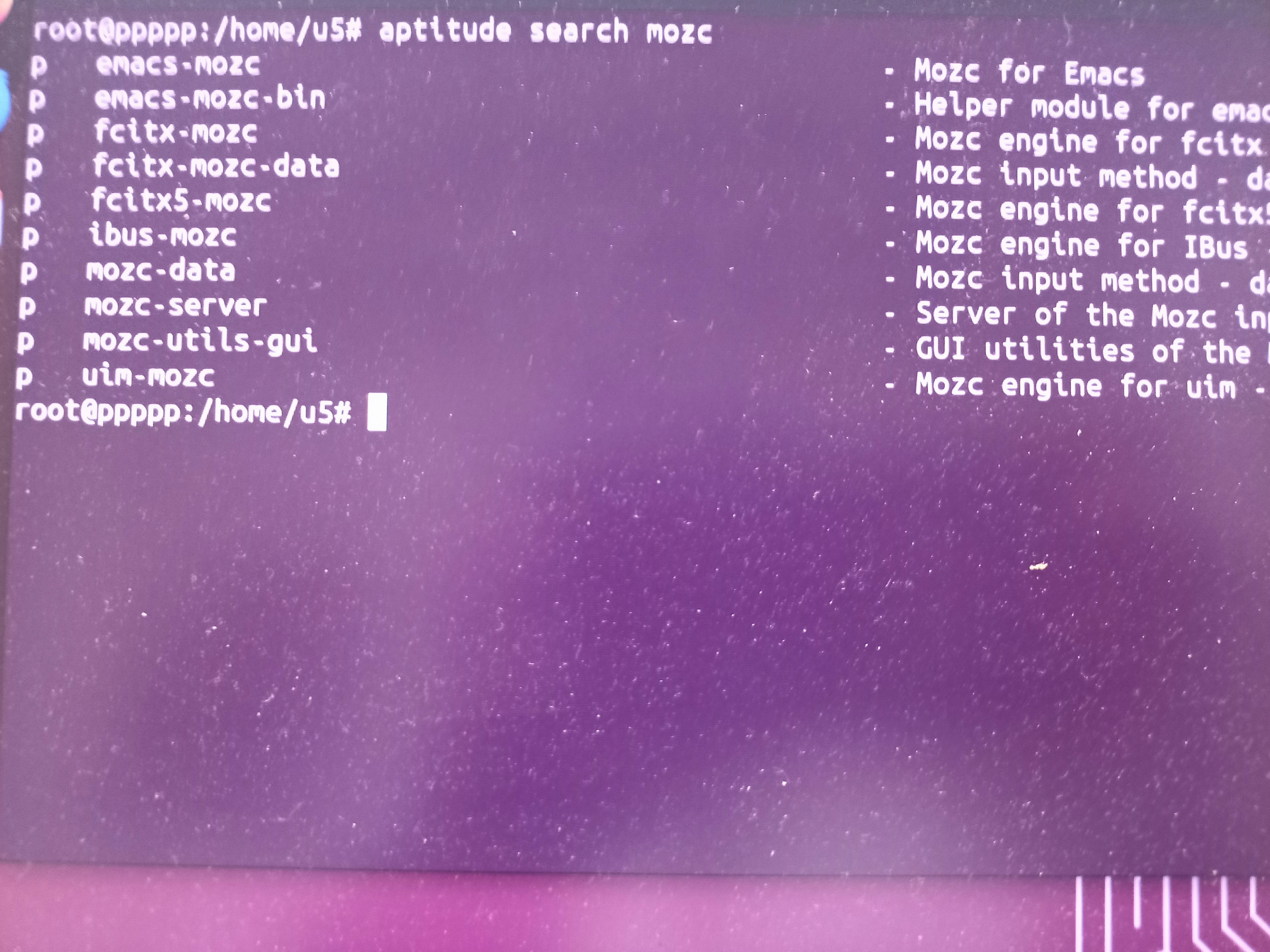
と MOZC関係がはいってません
それで ibus-mozc を インストールしました。
ibus-setup して調整し、再ログインした途端
と日本語OKとなりました
ubuntuでは
root@ppppp:/home/u5# fdisk -l
Disk /dev/loop0: 4 KiB, 4096 bytes, 8 sectors
Units: sectors of 1 * 512 = 512 bytes
Sector size (logical/physical): 512 bytes / 512 bytes
I/O size (minimum/optimal): 512 bytes / 512 bytes
Disk /dev/loop1: 68.53 MiB, 71860224 bytes, 140352 sectors
Units: sectors of 1 * 512 = 512 bytes
Sector size (logical/physical): 512 bytes / 512 bytes
I/O size (minimum/optimal): 512 bytes / 512 bytes
Disk /dev/loop2: 226.68 MiB, 237686784 bytes, 464232 sectors
Units: sectors of 1 * 512 = 512 bytes
Sector size (logical/physical): 512 bytes / 512 bytes
I/O size (minimum/optimal): 512 bytes / 512 bytes
Disk /dev/loop3: 475.09 MiB, 498163712 bytes, 972976 sectors
Units: sectors of 1 * 512 = 512 bytes
Sector size (logical/physical): 512 bytes / 512 bytes
I/O size (minimum/optimal): 512 bytes / 512 bytes
Disk /dev/loop4: 91.69 MiB, 96141312 bytes, 187776 sectors
Units: sectors of 1 * 512 = 512 bytes
Sector size (logical/physical): 512 bytes / 512 bytes
I/O size (minimum/optimal): 512 bytes / 512 bytes
Disk /dev/loop5: 9.49 MiB, 9953280 bytes, 19440 sectors
Units: sectors of 1 * 512 = 512 bytes
Sector size (logical/physical): 512 bytes / 512 bytes
I/O size (minimum/optimal): 512 bytes / 512 bytes
Disk /dev/loop6: 35.52 MiB, 37240832 bytes, 72736 sectors
Units: sectors of 1 * 512 = 512 bytes
Sector size (logical/physical): 512 bytes / 512 bytes
I/O size (minimum/optimal): 512 bytes / 512 bytes
Disk /dev/loop7: 416 KiB, 425984 bytes, 832 sectors
Units: sectors of 1 * 512 = 512 bytes
Sector size (logical/physical): 512 bytes / 512 bytes
I/O size (minimum/optimal): 512 bytes / 512 bytes
Disk /dev/sda: 223.57 GiB, 240057409536 bytes, 468862128 sectors
Disk model: 240C
Units: sectors of 1 * 512 = 512 bytes
Sector size (logical/physical): 512 bytes / 512 bytes
I/O size (minimum/optimal): 4096 bytes / 4096 bytes
Disklabel type: dos
Disk identifier: 0x1a9550ca
Device Boot Start End Sectors Size Id Type
/dev/sda1 * 2048 1050623 1048576 512M c W95 FAT32 (LBA)
/dev/sda2 1050624 312581774 311531151 148.5G 83 Linux
Disk /dev/loop8: 69.07 MiB, 72429568 bytes, 141464 sectors
Units: sectors of 1 * 512 = 512 bytes
Sector size (logical/physical): 512 bytes / 512 bytes
I/O size (minimum/optimal): 512 bytes / 512 bytes
----------------
# cat /etc/fstab
LABEL=writable / ext4 discard 0 1
LABEL=system-boot /boot/firmware vfat defaults 0 1
-------------
# df
Filesystem 1K-blocks Used Available Use% Mounted on
tmpfs 813048 3484 809564 1% /run
/dev/sda2 153189240 7309912 139553908 5% /
tmpfs 4065224 0 4065224 0% /dev/shm
tmpfs 5120 12 5108 1% /run/lock
/dev/sda1 516204 108181 408024 21% /boot/firmware
tmpfs 813044 2516 810528 1% /run/user/1000
---------
# ls /boot/firmware/
README boot.scr.bak initrd.img.bak
bcm2710-rpi-2-b.dtb bootcode.bin overlays
bcm2710-rpi-2-b.dtb.bak bootcode.bin.bak start.elf
bcm2710-rpi-3-b-plus.dtb cmdline.txt start.elf.bak
bcm2710-rpi-3-b-plus.dtb.bak config.txt start4.elf
bcm2710-rpi-3-b.dtb fixup.dat start4.elf.bak
bcm2710-rpi-3-b.dtb.bak fixup.dat.bak start4cd.elf
bcm2710-rpi-cm3.dtb fixup4.dat start4cd.elf.bak
bcm2710-rpi-cm3.dtb.bak fixup4.dat.bak start4db.elf
bcm2710-rpi-zero-2-w.dtb fixup4cd.dat start4db.elf.bak
bcm2710-rpi-zero-2-w.dtb.bak fixup4cd.dat.bak start4x.elf
bcm2710-rpi-zero-2.dtb fixup4db.dat start4x.elf.bak
bcm2710-rpi-zero-2.dtb.bak fixup4db.dat.bak start_cd.elf
bcm2711-rpi-4-b.dtb fixup4x.dat start_cd.elf.bak
bcm2711-rpi-4-b.dtb.bak fixup4x.dat.bak start_db.elf
bcm2711-rpi-400.dtb fixup_cd.dat start_db.elf.bak
bcm2711-rpi-400.dtb.bak fixup_cd.dat.bak start_x.elf
bcm2711-rpi-cm4.dtb fixup_db.dat start_x.elf.bak
bcm2711-rpi-cm4.dtb.bak fixup_db.dat.bak uboot_rpi_3.bin
bcm2711-rpi-cm4s.dtb fixup_x.dat uboot_rpi_4.bin
bcm2711-rpi-cm4s.dtb.bak fixup_x.dat.bak uboot_rpi_arm64.bin
bcm2712-rpi-5-b.dtb hat_map.dtb vmlinuz
bcm2712-rpi-5-b.dtb.bak hat_map.dtb.bak vmlinuz.bak
boot.scr initrd.img
--------------
# cat /boot/firmware/README
==================
The Boot Partition
==================
This file belongs to the boot partition of the Ubuntu Server for Raspberry Pi.
This partition is usually mounted at /boot/firmware at runtime (in contrast to
RaspiOS where it is typically mounted on /boot).
The files on this partition are described in the following sections, firstly
the user-editable files, followed by non-user-editable.
config.txt
==========
Contains the bootloader configuration. This is primarily of interest for
adding device-tree overlays and parameters to describe any hardware attached
to the system which cannot be auto-detected. Most official HATs should be
automatically recognized, but some third-party devices may need a "dtoverlay"
line added to the end of this file.
This file also tells the bootloader the location of the kernel (vmlinuz; see
below), and initial ramdisk (initrd; see below) but, in general, there is no
need to modify these settings.
The format of the file is roughly ini-like and is described fully at:
https://www.raspberrypi.com/documentation/computers/config_txt.html
cmdline.txt
===========
The Linux kernel command line. This typically defines the location of the root
partition; you may need to edit this if you are using alternate media for your
root storage. It also specifies the available login consoles including any
serial consoles. On Ubuntu Server, it is also useful for specifying remote
seeds for cloud-init by appending something like:
ds=nocloud-net;seedfrom=http://10.0.0.2:8000/
Where 10.0.0.2:8000 is an HTTP server serving alternative meta-data, user-data,
and (optionally) vendor-data files. Please note network-config is *not* sourced
from remote seeds.
It is worth noting that the command line specified here is further augmented by
the bootloader (start*.elf; see below) before it is passed to the Linux kernel.
To see the "final" command line at runtime, query /proc/cmdline.
The format of the file is a single line (or more precisely anything beyond the
first line is ignored), and is described fully at:
https://docs.kernel.org/admin-guide/kernel-parameters.html
network-config
==============
The initial netplan configuration for the network.
The format of this file is YAML, in the form expected by netplan which is
documented at:
https://netplan.io/
Examples for wifi and ethernet are included, but you may also configure bonds,
bridges, etc. in this file.
meta-data
=========
The meta-data of the cloud-init seed. This mostly exists to define the
identifier of the instance, but also to specify that the data-source in this
case is entirely local (the user-data file; see below). If you wish to use a
remote data-source with cloud-init, you can override this and specify that
source by appending something like the following to cmdline.txt:
ds=nocloud-net;seedfrom=http://10.0.0.2:8000/
Where 10.0.0.2:8000 is an HTTP server serving alternate meta-data, user-data,
and (optionally) vendor-data files. Please note that network-config will *not*
be read from remote data-sources; only the local one will be applied.
The format of this file is YAML, and is documented at:
https://cloudinit.readthedocs.io/en/latest/topics/instancedata.html
user-data
=========
The user-data of the cloud-init seed. This can be used to customize numerous
aspects of the system upon first boot, from the default user, the default
password, whether or not SSH permits password authentication, import of SSH
keys, the keyboard layout, the system hostname, package installation, creation
of arbitrary files, etc. Numerous examples are included (mostly commented) in
the default user-data.
The format of this file is YAML, and is documented at:
https://cloudinit.readthedocs.io/en/latest/topics/modules.html
https://cloudinit.readthedocs.io/en/latest/topics/examples.html
bootcode.bin (non-editable)
===========================
This is the second stage bootloader used on all models of Pi prior to the Pi 4
(i.e. the 2B, 3B, 3B+, 3A+, Zero 2W, CM3, and CM3+). On the Pi 4 (and later)
this is replaced by the onboard boot EEPROM.
This file is sourced from the linux-firmware-raspi package and written to the
boot partition by the flash-kernel process.
start*.elf, fixup*.dat (non-editable)
=====================================
This is the tertiary bootloader used on all models of Pi. This is the
executable that loads the Linux kernel (see vmlinuz below) and initramfs (see
initrd.img below), and then launches the Linux kernel passing it the address of
the initramfs. The bootloader is (mostly) configured by the config.txt (see
above) which specifies the location of the kernel and initramfs to load.
These files are sourced from the linux-firmware-raspi package and written to
the boot partition by the flash-kernel process.
vmlinuz (non-editable)
======================
This is the compressed Linux kernel which is loaded, unpacked, and executed
by the start*.elf bootloader.
This file is sourced from some variant of the linux-image-*VERSION*-raspi
package and written to the boot partition by the flash-kernel process.
initrd.img (non-editable)
=========================
This is the "initial ramdisk" which the Linux kernel executes first. It
contains all modules and utilities necessary to find and mount to the "real"
root partition. Its content can be inspected with the "unmkinitramfs" tool, and
its generation can be influenced by the configuration files under
/etc/initramfs-tools/.
This file is generated by the utilities in the initramfs-tools package (in
particular mkinitramfs), and written to the boot partition by the flash-kernel
process.
bcm*.dtb (non-editable)
=======================
These are the "device-tree" files which describe the hardware of a particular
model of Raspberry Pi. The device-tree to load is automatically determined by
the bootloader (start*.elf), which also modifies the device-tree (e.g. fixing
up the amount of memory on the Pi 4) before passing it to the Linux kernel.
overlays/*.dtbo (non-editable)
==============================
This directory contains "device-tree overlays" which supplement the "base"
device-tree passed to the Linux kernel. Some overlays are loaded automatically
(e.g. via the HAT specification). Others must be specified manually with
"dtoverlay=" lines in config.txt (see above). Device trees may also be
customized with parameters which may be specified as "dtparam=" lines in
config.txt.
でした
ubuntuのCPU温度は
https://qiita.com/tetsu_koba/items/4b81b32eead391a685c3
にならうと
$ sensors
cpu_thermal-virtual-0
Adapter: Virtual device
temp1: +43.5°C
rpi_volt-isa-0000
Adapter: ISA adapter
in0: N/A
でした。
GPUヒートシンクンクの転用なのでまずまずか
ができるので がさバル きーぼーボードを持っていかなくとも なんとかなります
X-11)pi5 に manjaro linux 早く来い
https://manjaro.org/download/
待てば海路の日和あり
X-12)マニュアル
X-13)バックアップ 〜 クローン
これは
https://blog.goo.ne.jp/a-storm/e/616403c75c544d4c5aaefdeeb4147093
をつかえばいいです
この前にgpartedで縮小してからでもいいです。。
X-14)arch linux (gnome 起動まで)
長くなるので
をご覧ください
X-15)Rpi5では 10年以上前の 非cups な プリンター Brother DCP-J925N です
Connection: ipp://BRN001BA98AC0C7.local:631/ipp/port1
ufw 扱いにくいので firewalld をインストールして
./comment-out.bat firewalld-rule.bat
firewall-cmd --reset-to-defaults
firewall-cmd --permanent --zone=public --add-rich-rule="rule family="ipv4" source address="192.168.117.0/24" port protocol="tcp" port="22" accept"
firewall-cmd --permanent --add-service=mdns
firewall-cmd --permanent --add-service=ipp
firewall-cmd --reload
echo '-----------------------------'
firewall-cmd --list-all --zone=public
でなんとか印刷できてます
X-16)CPU温度
CPU-おんど.bat
while true
do
date "+%H-%M:%S"
sensors | grep temp1
echo
echo
echo '------------'
sleep 30
done
X-17)ubuntu の場合
# ./comment-out.bat /boot/firmware/config.txt
[all]
kernel=vmlinuz
cmdline=cmdline.txt
initramfs initrd.img followkernel
[pi4]
max_framebuffers=2
arm_boost=1
[all]
dtparam=audio=on
dtparam=i2c_arm=on
dtparam=spi=on
disable_overscan=1
[cm4]
dtoverlay=dwc2,dr_mode=host
[all]
dtoverlay=vc4-kms-v3d
camera_auto_detect=1
display_auto_detect=1
arm_64bit=1
dtoverlay=dwc2
# ./comment-out.bat /boot/firmware/cmdline.txt
zswap.enabled=1 zswap.zpool=z3fold zswap.compressor=zstd multipath=off dwc_otg.lpm_enable=0 console=tty1 root=LABEL=writable rootfstype=ext4 rootwait fixrtc quiet splash
